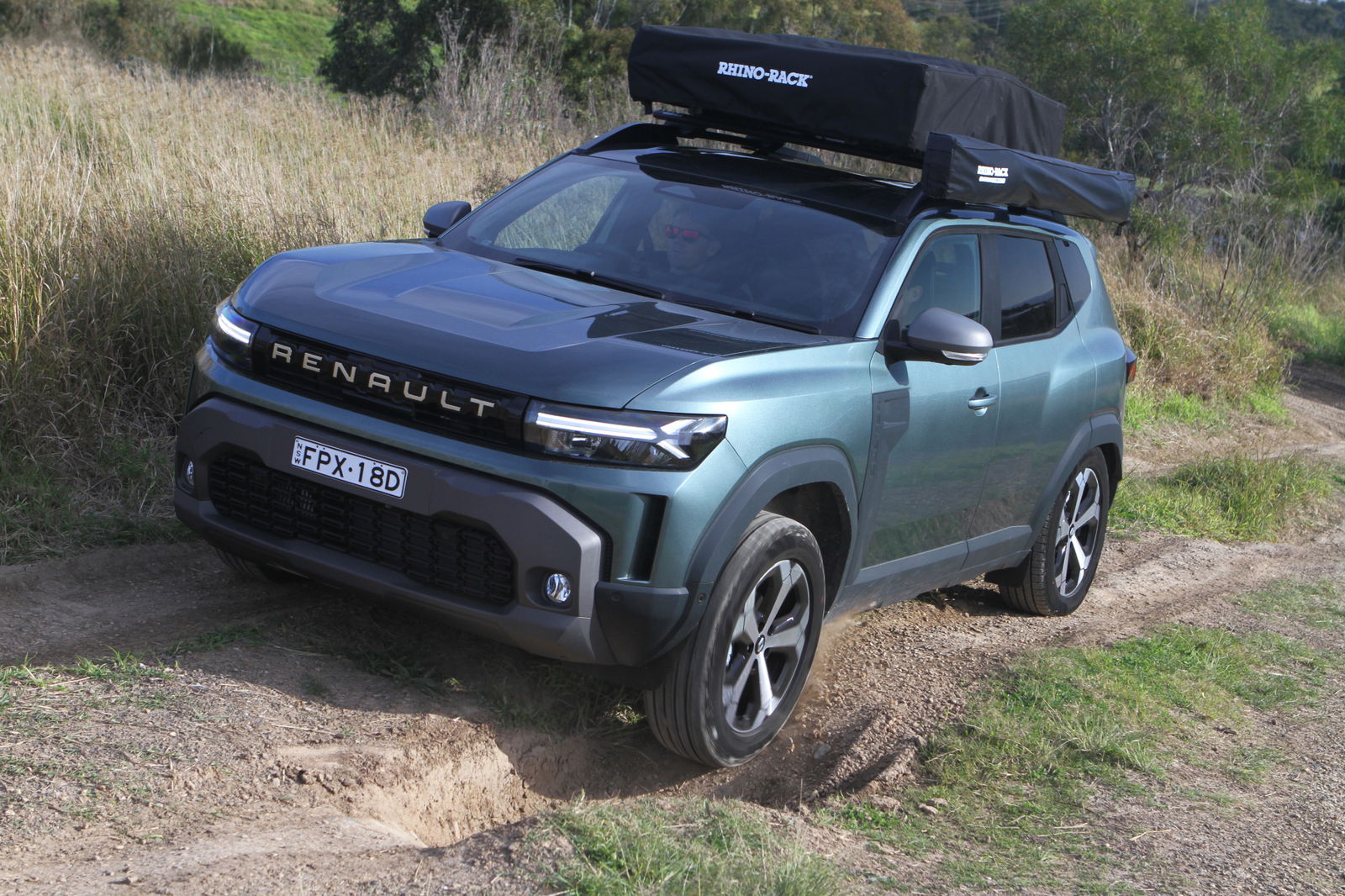Say the word Dacia and you’ll likely be met with responses such as “what’s that?”, “good news” or “that’s not how you pronounce it” – just a handful of reasons why this new SUV is sold locally as the Renault Duster.
It’s the first time we’ve seen the Duster in Australia, with local buyers having missed out on the two previous generation models, except for when they went over to Europe on holiday and experienced it on a rental fleet, or were somehow involved in a United Nations operation.
Now in showrooms, prices start from $31,990 before on-road costs for the front-wheel drive, 1.3-litre Duster Evolution, increasing to $36,490 plus on-roads with a 1.2-litre engine and four-wheel drive. The Techno is priced from $36,990 before on-roads (1.3-litre front-wheel drive).
A 1.2-litre 4×4 version of the Techno is due in December and will be priced from $37,990 plus on-road costs.

With those prices, the Duster (at least in 4×4 guise) is aimed squarely at the Suzuki Jimny XL and the Subaru Crosstrek, with Renault banking on it offering arguably greater on-road ability than the Jimny while being better off-road than the Crosstrek.
So, does it?
Let’s start with the Duster 4×2, which makes 113kW and 250Nm, and can only be had with a seven-speed dual-clutch automatic transmission. This is a recipe for a capable city car with the ability to easily keep up with traffic on the highways and motorways of Australia.
And it does just that. The transmission shifts smoothly and always knows the right gear to be in, matching wherever the torque or power curve is at any given moment. There’s never any traction issues with the Continental tyres, which also prove to be quiet on the open road.
It may not seem like a lot of power and torque, but at a relatively light weight of just under 1400kg, the Duster doesn’t need much to get moving.

Dynamically it’s very sure-footed, both on the purpose-made proving ground test tracks of Lang Lang as well as the surrounding roads. The steering is light but responsive and well-weighted, while the Duster feels agile – not like a sports car, but impressively so given how capable it is when the sealed road stops.
On an off-road track which would mimic more serious driving than what 90 per cent of buyers would encounter, the front-wheel drive Duster managed to traverse the course with minimal effort, its solid ground clearance and well-calibrated vehicle control systems working well to keep it moving.
This was despite the car in question being the better-equipped Techno variant, which gets 18-inch wheels rather than the Evolution’s smaller 17s.
While the front-wheel drive Duster was a showing of how good an on-road product it is while still being capable of going off-road, the 4×4 is almost the opposite case: a very solid off-roader which loses little of its sealed surface capability.

You pay more for the all-paw Duster despite arguably getting less, with a 1.2-litre three-cylinder mild-hybrid petrol engine featuring under the bonnet, developing 96kW and 230Nm. Where the front-drive is auto-only, the 4×4 is exclusively available with a six-speed manual transmission.
Starting on-road, you feel that comparative lack of power compared to the front-drive Duster, and the combination of a light clutch and gear shifter don’t make it the most engaging drive out of the box.
However, as anyone who’s driven a Jimny could understand, it’s still enough to get moving, easily beating the Suzuki’s 75kW/130Nm outputs.
The Duster 4×4 doesn’t feel quite as sharp as its two-wheel drive counterpart, partly due to its extra ground clearance which also raises the centre of gravity up, however the version we drove was also of the Evolution variety, running on 17s.

Still, this is a very well-sorted chassis that feels light when tipping it into corners, and the fitment of good quality tyres from the factory helps its case compared to the budget-friendly choices of some of its competitors.
Another key difference between the two is that the 4×4 gets a multi-link rear suspension setup, while the front-driver makes do with a torsion beam.
As expected, it’s off the road where the Duster 4×4 excels, again providing all the ground clearance a majority of buyers would need. The positioning of its wheels on each outside corner with little overhang also means impressive approach and departure angles, while a chamfered front bumper helps to reduce scrapes.
The Continentals are still a good tyre off-road, but we also got to drive an example fitted with BFGoodrich K03 all-terrains, something which turns it into a properly solid off-roader that would surprise most enthusiasts.

An added bonus is the mild-hybrid system, which automatically restarts the engine if you stall. All you need to do is dip the clutch and it fires back up.
In addition to how the Duster drives, it’s presented as a well-equipped vehicle, with arguably the biggest omission being that of an adaptive cruise control system, however it retains autonomous emergency braking.
The Renault Duster could become one of the brand’s best-sellers in Australia, and take away buyers not only from the Jimny but also the aforementioned Crosstrek, while also offering Skoda Yeti owners a more modern alternative.














Discussion about this post